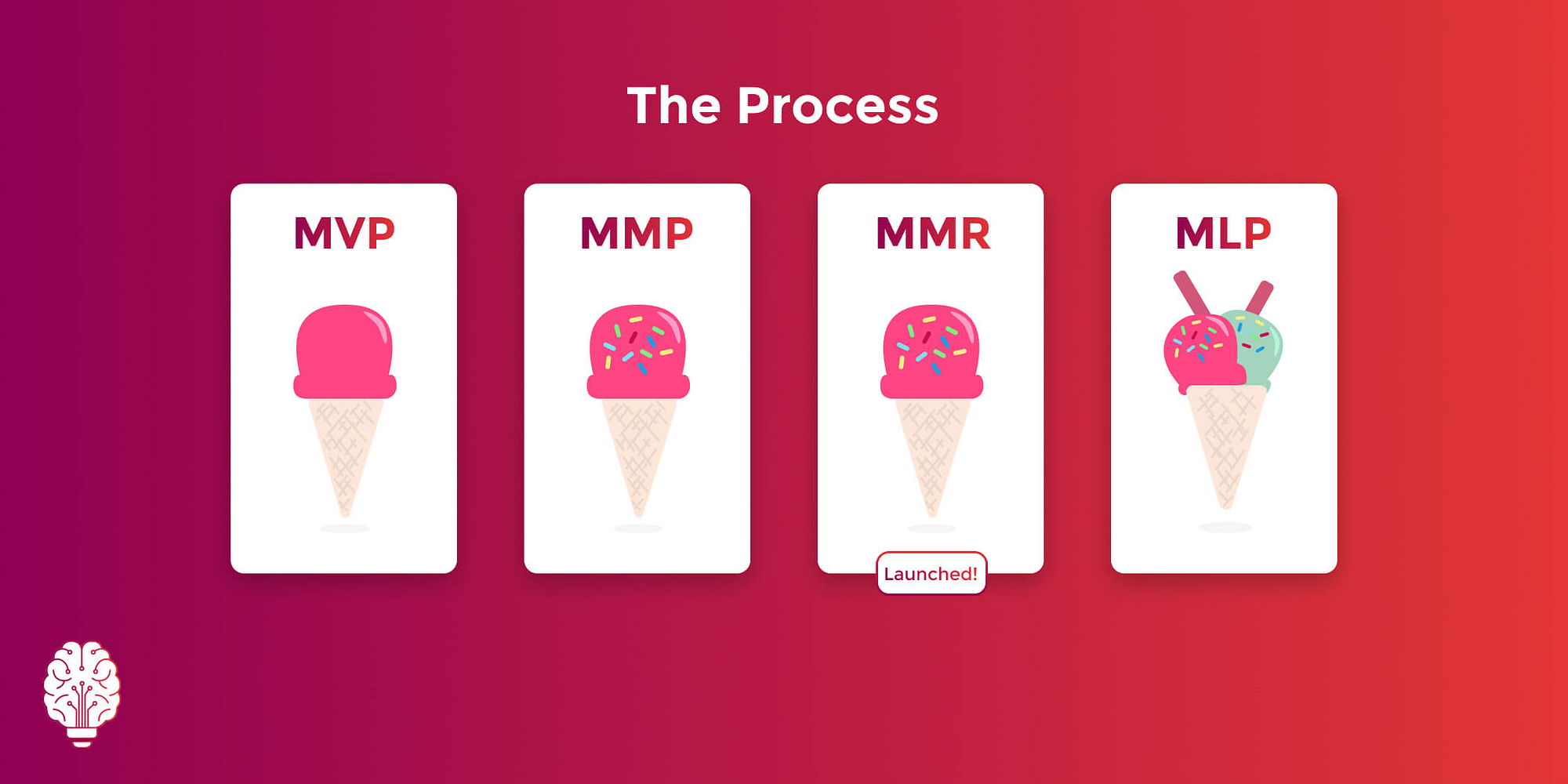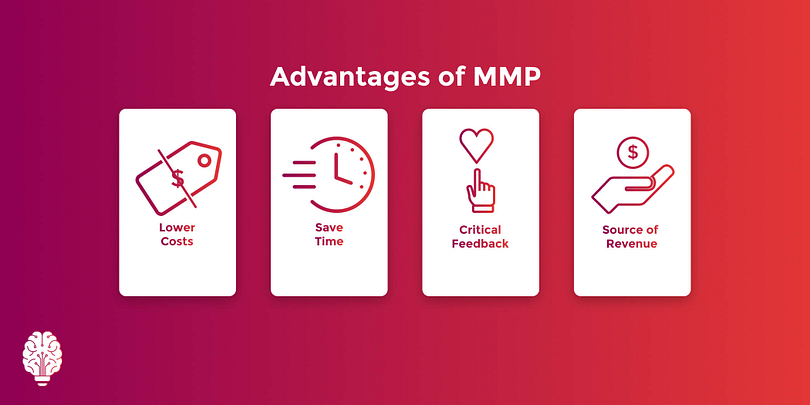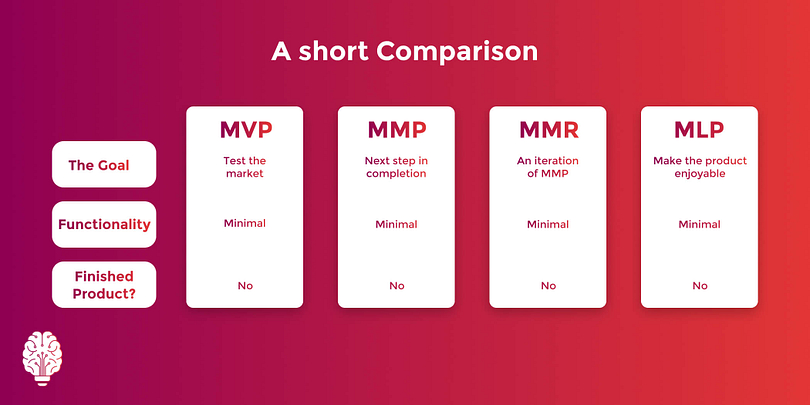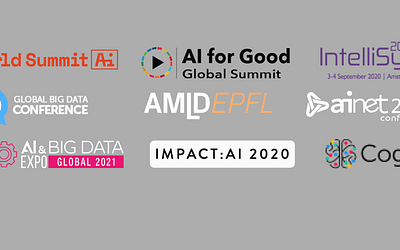In our previous article, A Beginner’s Guide To MVP And Its Importance, we established the concept of MVPs. This technique has now become a go-to path for all startups and is an early but comprehensive way to nudge consumer insights that even the consumers aren’t aware of. Established through a loop of feedback iterations and development, it gradually becomes a coherent offering.
The next step is forming MMP, MLP and MSP. Confused? Let’s unpack them.
Finalizing The MVP
Building an MVP is an iterative process of creating a minimal product for consumer to try. Features need to be enlisted, prioritized and presented to potential buyers for them to give valuable feedback on its functionality. Is it enough? What’s missing? Does it solve the problem it was designed to? Not only this, MVPs also help highlight those features that are extra and the customer does not crucially require them, at least at the initial phase.
The features filtered after the process are those that fulfill the purpose of the product itself. They are tied to the need or problem it was originally designed to cater. After an MVP status is achieved, there are several product development stages it passes through as follows:
After MVP, We Have The MMP Or The Minimum Marketable Product
A Minimum Marketable Product (MMP) is the next step after an MVP. It is the version of your MVP that can finally be presented to the market. Over the course of collecting consumer response data, the product constantly evolves to become an offering based on the untapped needs of the consumer. Hence, it is the first actual step towards the real product.
Advantages of MMP
- Usually reduces the time taken to release a product into the market.
- Lower cost than producing and launching a complete product.
- Allow crucial customer feedback which will lead to the improvement of the final product.
- Potentially becomes an early source of revenue.
A term that is often used interchangeably with MMP is the Minimum Marketable Release (MMR). So, what is the difference?
DIfferentiating MMP and MMR
MMP is the first version of a product that can be developed and sold later on. The product version that is ready to be launched into the market is known as Minimum Marketable Release (MMR). The main concept to note is that where MVP and MMP are only units of measurement in the process of product development, MMR is the version that meets the market.
Next Up, The Minimum Marketable Feature (MMF)
At this point, we understand if you are dazed with all the abbreviations. It will get easier. The important point to note here is that at times the difference between all these stages become slightly blurred, but the logic behind each is what needs to be understood.
The Minimum Marketable Feature comes after the loop of development and subsequent feedback is played a number of times. It is that feature of the MMP or the MMR that clarifies the purpose of the product. This is the one feature that forms the foundation of the product itself. Consumers will certainly not do without it.
The MMF has potential to be launched alone as a complete product due to its intrinsic marketable value. Thus, it not only starts generating substantial revenue for the company by saving costs but also begins to create a loyal customer base. Other ways it affects the business are:
- Increased consumer awareness of the brand.
- Revenue generation due to its potential to be launched as separately.
- Competitive edge over similar products in the market.
Minimum Lovable Product
Minimum Loveable Product is the final stage of completion. This last derivative will be the ultimate offering of the company in the shape of a product that is developed through informed learning. The direction of each stage is determined by timely, accurate, actionable insights derived from data collection of customer feedback. This minimizes the discrepancies that might arise with hunch-based, intuitive decision-making and attempts to reduce the probability of failure.
MLP is created when the most crucial features of the product are improved for quality. So where MVP, MMP have basic functionality of the offering, an MLP is made to be enjoyed. The aim is to make the consumer like the product and not just its minimal functions.
Granted that creating an MLP takes more time than an MMP, but it is an opportunity to get early adopters hooked to the product and future updated versions of it. This not only substantially impacts customer knowledge of the company but opens way for massive revenue generation.
At this stage, it is particularly important to have an agile development team on board to make swift changes to the product that are demanded in the customer feedback and suits the long-term strategy of the company.
Key Terms Revised
We realize that one can become muddled with all these similar terms. Here’s a quick list to refer to if you feel confused:
- Minimum Marketable Product (MMP): The version of the product that has potential to be presented to the market.
- Minimum Marketable Release (MMR): The version that MMP evolves into and gets released into the market.
- Minimum Marketable Feature (MMF): The crucial features of the product that have the potential to be released as an individual product
- Minimum Lovable Product (MLP): Version in which the basic features are improved in quality and made enjoyable in order to make the customer fall in love with the product
Points to Ponder
Throughout the process, there are certain guidelines that remain constant. They are embedded in the idea of Agile Development and are absolutely crucial to make the best out of what you’ve set to achieve:
- Make sure to validate your business idea every step of the way.
- Listen carefully to any feedback given by users, without which the whole process might get stirred in the wrong direction.
- Implement only minimum features that solve the end-user’s problems.
- Test the wow-effect of your product with MLP by continued up-gradation to keep customers on board.
Following the chain of these minimal product development stages is a thorough guideline for agile-powered startups. One that not only makes this process simple, swift and cost-friendly but also gradually shapes other supporting operations of the company as a whole. To accept this new way of doing things, a crucial requirement is an agile team. One that is able to internalize the system and consistently ready to learn from the process.







0 Comments